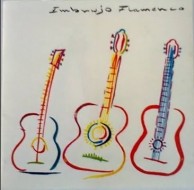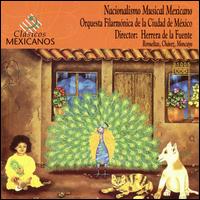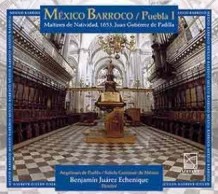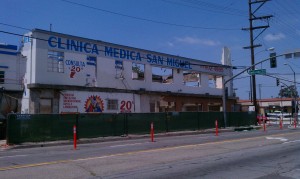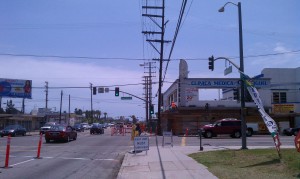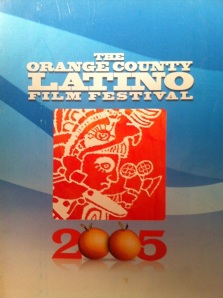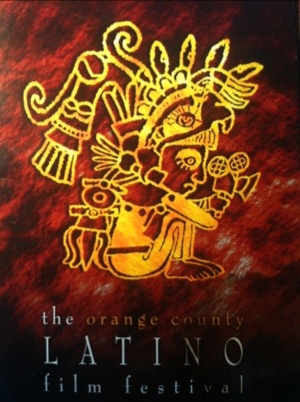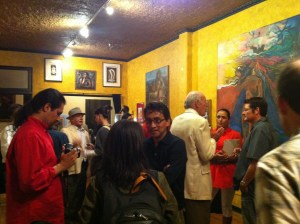Remembering Pedrini’s
I took my first guitar lessons at Pedrini’s Music near Fourth & Main streets in the downtown. Pedrini’s has been gone for a long time now, over ten years it seems. In it’s place now is a beauty academy.
I remember going there as a kid also, for school band related musicnecessities like saxophone reeds. My father bought my first guitar there, when I was eight years old.
I remember the many accordions and horns behind the counter… There were guitars racked on the wall at the northeast section and towards the back as you enter the walkway from Fourth street. You’d walk in through the arcade, turn right into the store, then on the left near the entrance there were music scores. They had varying music books: piano methods in Spanish, band methods, cancioneros (popular Mexican songbooks) etc. I bought two piano books there, a technique book called Una docena al día (A Dozen a Day) and some arrangements of Rachmaninov works.
Near its end, Pedrini’s stopped replenishing its supply of sheet music, unlike The Sheet Music Shoppe on Bristol & Callens Common (More on that soon). Their music books were worn, this was all due to music illiteracy.
Music Lessons
Pedrini’s had practice rooms in its basement where one guy taught guitar and other instruments. Lessons were an hour and they started with the teacher writing out an assignment then leaving the student to practice for the remainder of the hour. Students bought their lessons ahead of time, typically on arrival, where they’d pay and get a receipt to show the teacher.
The practice rooms were rented out to music groups, most of them played música versátil, the type common in Mexican gatherings.
The Pedrini Guitar Method
Pedrini’s guitar teacher, Ramiro I think was his name, taught chords and harmonized scales used in requinto style playing (guitar soloing). He started with the key of C Major, presenting a harmonic formula, orcírculo, common in many Mexican and Latin-American boleros, which typically are romantic songs for serenading etc. So the first chords were C Major, A minor, D minor and G7, and the C Major scale was harmonized in thirds. Of course, the harmonic system was in Spanish, so instruction was done using solfege: Do re mi fa sol la si, instead of the English system CDEFGA, so you’d have Do mayor, La menor, etc.
With each new lesson a new key was introduced until eventually minor keys were taught. These minor keys were accompanied by a scale, harmonized in sixths instead of thirds like the previously learned major scales (with the exception of E Major).
This is how I built a basic chord and scale vocabulary, that I put to work with a rondalla, which is a social group of guitarists and troubadours. The rondalla (or estudiantina, or tuna) is a tradition of Spain, Mexico and Latin-America. And it was alive and well in Santa Ana. We rehearsed at Our Lady of Guadalupe Church at Delhi and we went around serenading…
I’m happy to say that I built a musical foundation, in part, through Pedrini’s Music in downtown Santa Ana. Not only am I happy, and proud, but I’m very lucky to have experienced this piece of Santa Ana now gone into history. One after another music stores closed in Santa Ana. Soon after Pedrinin’s there was Blue Note Music, which serviced the instruments of Santa Ana Unified, which was next door to where the Proof bar is now. Then The Sheet Music Shoppe closed, they too serviced SAUSD. Most recently Carvin Guitars on Main street across the Bowers Museum closed.
But not all is lost. There likely will be other stories to tell of music merchants in town. Colton Piano returned. They’re located on Main street near the School of the Arts. Their business a bit maimed, just a shadow of their former glory from when they were near the 55 freeway, and where I took my first piano lessons.
To be continued, there’s still something to say about Colton Piano, Blue Note Music and The Sheet Music Shoppe.
Remembering Samara Musical
Years ago, going back 20 years or so, there was a music store named Samara Musical on the corner of 1st & Broadway streets in Downtown Santa Ana.
I acquired some of the rarest imported cds there, and not just anything, but really impacting, life-changing music. It’s sounds like an exaggeration but it’s true.
Samara was associated more with popular or regional Mexican musicgenres, things like corridos, mariachi, versátil even rock en español. This last genre is why I entered Samara in the first place… I went hunting specifically for that genre when I stumbled upon an overlooked cd carousel. That carousel had some absolute gems of albums. I think the first ever cd I bought there was called Embrujo flamenco, by a group of the same name, recorded on Sony Discos in the mid 1990s. I was floored by the quality of that group, a Mexican trio of guitarists that recorded arrangements of classical guitar works but adapted to flamenco guitar. They also included some Mexican arrangements like El balaju and Huapango.
Given the rarity and quality of that album I returned to Samara Musical. I went back to that same carousel and found what ended up being the album that changed my life, Nacionalismo musical mexicano, which is where I was first exposed to the symphonic work La noche de los mayas (The Night of the Mayas) by Silvestre Revueltas. That was back 1997 or 1998. Soon I became an enthusiast and collector of symphonic Mexican music and was never the same from that point on, to this day.
I never imagined that such a modest music store would house such important music, absolute gems of Mexican musical patrimony.
My beginnings as a collector at Samara Musical led to searching elsewhere for this genre of Mexican art music and the only other place nearby with a respectable collection was the classical music section at Tower Records in Tustin. I added album after album from there, then elsewhere like Mixup Classical at Perisur mall in Mexico City, their online store, Librerías Gandhi in Mexico City, Bellas Artes in Mexico City (where I bought Manuel M. Ponce’s complete piano collection, 7 cds) and in other parts.
The classical section at Amoeba in Hollywood deserves some mention, I must say.
Nowadays, very luckily, there is the Urext online store, which sells digital music downloads. That label has produced some of the most significant Mexican art music albums in recent times like the multi-volume México Barroco, México sinfónico, La melodie mexicaine (French art songs by 19th-century Mexican composers), Canciones de Jalisco (art songs from the state of Jalisco) and so much more. These are only very few of the ones in my personal collection, one I call the Colección Avaliana.
All of this was made possible my a modest carousel in an overlooked corner at Samara Musical.
Comics & Cough Medicine
“COMICS & COUGH MEDICINE”*
By Salvador Navarrete
Photos by Sal Navarrete and Manuel J. Escamilla, Archivist – Santa Ana History Room
I was saddened when I heard that the Bristol Drug store was going to be torn down by the city as part of the Bristol street widening project. The Bristol Drug Co. (store) built in 1948 was an old school neighborhood pharmacy that brings back Santa Ana childhood memories for me. Firstly, because it was where my mother would get our cough medicine and whatever medicine we needed; second, it was where I used buy my comic books when I was a kid back in the mid to late 70s. Anytime my dad would give me a buck or two, I would literally run to the Bristol Drug store, which was about half a mile from where I lived in the Artesia barrio. I would run, then catch my breath, walk, and then take off running again, sometimes almost getting hit by the passing cars as I was crossing the street. With the money jingling in my pockets, I could not wait to see what new comic books had arrived on the shelf. Back in those days, the comics were 20 cents to a quarter, so I could buy at least 8 to 10 comic books with a couple of dollars when my mom or dad gave me feria (cash, bread, dough etc). I must admit, I would sometimes even sneak into my mom’s purse and grab some loose change to get my comic book fix.
The Bristol Drug store always had a great selection of comic books. When you would walk into the store, there was a long rack up against the wall with new comic books neatly arranged in their slots. I would buy anything from Richie Rich, Archie, Disney, DC, but my favorite wasMarvel Comics. In my opinion, they were some of the greatest comic books ever made, especially in the 60s and 70′s era—what they call “The Golden Age Of Comics”: The Avengers ,The Hulk, X Men, The Fantastic Four, Two Gun Kid, Daredevil, Iron Man, Black Panther, The Thing, Silver Surfer, not to mention the great villains, storylines, art, and humor from the great Stan Lee, Jack Kirby, and so many talented artist and writers.
My favorite comic book, however, was Spider-man because he was funny (he would make jokes while battling some bad guy), he crawled up walls, kicked ass, and was a kid like me. I could relate to some of the stuff that would happen to him, he always had some type of problem that he would try to work out by the end of the story or if not …to be continued in the next issue, so you had to wait a week to see what would happen. Growing up with three sisters, I would pretend I was Spider-man shooting my webs at them with my fingers pressed up to my palm just like the way Spider-man would activate his web shooters. I would also crawl up in the hallway walls with my arms and legs pressed up against both walls; I could go all the way up to the ceiling and scare the crap out of my sisters and mom. I was a nerdy kid in elementary school ..so I would get picked on sometimes by bullies. I would sometimes wish I had Spider-man powers to kick some ass on these bullies. When things were not too happy at my house or some kind of family problem, I would read my comic books. My comics would take me into another world. If my friends were not around to play, I could get lost for hours reading these awesome tales, at the same time, learning words I never knew, feeding my head and letting my imagination grow wild.
By the time I was 12 years old I had amassed a huge comic book collection. I had maybe a thousand or so, and I took good care of them too. They were not all messed up or torn up, but when I got into my later teen years, I stopped buying comics. I thought I was too cool and got into hanging out with my Homies. I started getting into trouble, partying down, getting high, and all that stuff. One day, me and my homeboy Sammy wanted to buy some weed, but we didn’t have any money, so the first thing that came into my mind was to sell the comic books I had stored in some boxes. We took a couple of shopping cartsand wheeled the boxes to this comic book shop down the street and sold them for nothing, just to catch a buzz. To this day, I have always kicked myself for it, but not for the value of what they would be worth now, but because they were such a fantastic part of my childhood that was so much fun. Now, all I have is the memory of those days.
Unfortunately, now the Bristol drug store is gone too. I would tell my kids all the time, “You see that place? I used to buy my comic books from there when I was a kid.” I would tell them my story every time we pass the Bristol drugs and they would say, “Yeah dad, we know, you used to buy your comic books there when you were a kid.”
I heard that the city of Santa Ana was going to knock the place down very soon and I wanted to take some photos before they would do so. I would frequently pass by there all the time, but, for some reason, I never had a camera, or I was in a rush, I had no time to park, or my cell phone took bad pictures. It was either one thing or another. Until, one afternoon, I passed through there and the demolition of Bristol drugs had already begun. They tore down the side and back walls of the structure leaving just the facade standing. The workers had left for the day to continue the work the next day. I thought to myself “I didn’t get a chance to take a picture of this place, but at least the façade is still up and I could take a photo of what was left. So, I parked my ride and walked around some of the rubble of bricks, concrete and iron construction rods still sticking out of the ground, looking at the empty space where this building once stood for 63 years.
I took out my new cell phone that took better pictures. I started framing a nice shot, but because my phone was new to me, I didn’t know how to adjust it. I couldn’t take the damn pictures, and I was already running late to a Deejay event I had to go to. So, I looked at the place that was the Bristol Drug Co. for the last time, said thanks for the comic books and the cough medicine, and I drove away…..To be continued…
“Ras” Salvador Navarrete
*This story was first published in Santanero #5
Remembering Santa Anita
By Omar Ávalos, Salvador “Sal” Navarrete and Francisco Ávalos Ortiz
Barrio Santa Anita, or “Santa Nita” as some locals have always called it, is one of the oldest Mexican colonias (neighborhoods / colonies) in Santa Ana. It extends from Campesino Park on the north to Santa Anita Park on the south, and from Harbor Blvd on the west, to about Jackson street or a few streets more to the east. It is one of the largest barrios, possibly larger than Barrio Artesia, another historic Santa Ana barrio. One cannot get an appreciation for, or a sense of the scale of the neighborhood until driving through it. A drive through it while talking of the neighborhood’s yesteryear with lifelong Santa Ana resident and DJ Sal Navarrete is even better.
Prior to moving to Santa Anita, Sal and his family lived in the other historic Santa Ana barrios of Logan and Artesia. Sal’s father set roots and moved his family to the Logan area in 1960 where the family lived at Garfield street and Santa Ana Boulevard.
In 1972 the father moved the family to Barrio Artesia where they lived at 3rd and Daisy streets.
In 1978 the family moved to Fifth street and Bewley in Santa Anita, where Sal briefly attended Russell Elementary, which was and still is, oddly, part of the Garden Grove Unified School District.
Sal remembers seeing Barrio Santa Anita with no sidewalks and dirt roads. A number of the main streets we drove through like Bewley, Jackson, Gunther, Figueroa and others were still dirt roads with eucalyptus trees with huge roots in the late 70s and early 80s. He remembers when the reputable Favori Vietnamese restaurant on First and Jackson streets was a Burger King and when the Taquería La Vida a bit further west on First street was a McDonald’s. A portion of a McDonald’s golden arch still remains on the side of that building.
It was on Bewley that Sal met and married his neighborhood sweetheart.
There was a gas station that dated to the 1920s on the corner of 5th and Gunther streets, and there was a dairy that sold freshly squeezed milk from cows that grazed on land near the Santa Ana River and Fifth street, across from Campesino Park. That land is now the site of the Wellington Place and Bentley Park housing developments.
My father, Francisco Ávalos Ortiz, remembers seeing horse stables and trails by Fifth street and the Santa Ana River.
Sal mentioned that the city has always tried to redevelop Willowick Golf Course and the Santa Anita area since the 1980s. There was talk in the early 80s of building a mall there. The amount of land there was enough to whet the appetites of any developer. Sal said that in more recent times some homeowners were sent letters indicating an intent to develop a soccer stadium at Willowick for Chivas USA, and that some homes could be bought and removed for that purpose. His friend “Checo” who lives on Figueroa said his household received a notice about a potential Chivas move.
There was a time when more people in the neighborhood used to know each other but many of the Santa Anita friends and families that he remembers have passed on or moved away and only very few remain.
Santa Anita, on a personal note and how I remember it, has always seemed to be a bit of a sleepy side of town, at least from the outside, and this may be because of its troubled past with crime and the Santa Anita gang. Sal said that there were too many bars near Santa Anita, and that the neighborhood was plagued with drug dealing. Santa Anita was the first Santa Ana neighborhood to have a gang injunction placed on it, and that made the neighborhood even more sleepy, but on a good note.
Nowadays it is very rare if not impossible to see a gang member anywhere in the neighborhood. Instead, ordinary people are seen playing basketball at the courts at Santa Anita Park, and there’s a very well-kept and fenced-off soccer field there. The whole park seems a bit under utilized with more potential. At the road entrance to the park there’s a section of land that is fenced-off and used, infuriatingly, for nothing more than storing tires. In a city that needs park space that land should be incorporated into Santa Anita Park. Additional parking could be added there along with more park space.
The Santa Anita that I as a passerby have known, my sleepy Santa Anita, is like a sleeping giant. It is in the hands of those in Santa Anita to determine the future of their neighborhood by enlivening their local economy with new businesses. It needs an economic shot in the arm and who better to pick up Santa Anita than those that are there or have roots there?
At the same time the city’s elected officials need a wakeup call and they need a visionary there, a fresh set of eyes, to help bring Santa Anita to its maximum potential. The city can start with acquiring the land next to Santa Anita Park to add more park space.
In Retrospect: The Orange County Latino Film Festival, Part II
In September of 2005, the second Orange County Latino Film Festival was held at the Metropolitan Fiesta Twin Theater in downtown Santa Ana.
In its second year the festival had more momentum, but saw that momentum pulled abruptly by its main sponsor, Vanguard Cinema, afterwards. There would not be a third festival.
Freyr Thor, one of the main organizers, said that the festival attracted more people in its first two years than the Los Angeles and San Diego International Latino Film Festivals did in their first two.
The outdoor opening night gala was held above the Fiesta Twin theater, outside of what now is the “Downtown Inc” main office. It, like 2004′s festival opening gala had a large Latino film industry reception, the likes of it not equaled again in Santa Ana thus far.
Although the OCLFF was a short-lived endeavor, it set a very high bar for new film festivals in Santa Ana like the OC Film Fiesta, which is heading into its third year, and the Santa Ana Indie Film Fest, which is seemingly Downtown Inc’s answer, though shoddy at best, to the OC Film Fiesta.
The OCLFF set that bar through the attracting of more celebrities and movie industry professionals and through more sponsorship. It was more commercially-oriented from the start and maybe overly ambitious, and that was its demise.
But for two years, the stars of Latino Hollywood and beyond descended on Santa Ana. Until the next meteor shower.
OCLFF Audience Award 2005
EL rey de los coleaderos, Directed by Héctor Hernández
2005 Feature-Length Films
Club eutanasia (Mexico 2004. Written & Directed by Agustín Oso Tapia)
Como voy a olvidarte (Ecuador, 2004. Directed by Bernardo Cañizares)
El mago (Mexico, 2004. Directed by Jaime Apariclor)
Manos libres (Mexico, 2005. Written & Directed by José Buil)
Mojados (USA/Mexico, 2004. Directed by Tommy Davis)
Puños rosas (Mexico, 2004. Directed by Beto Gómez. Written by Beto Gómez & Alfonso Suárez)
Parejas (Mexico, 2005. Written & Directed by Enrique Arroyo Schroder)
El rey de los coleaderos (OCLFF Audience Award Winner) Héctor Hernández & Elena Prado
Sin ton ni Sonia
Sobreviviente
La sombra del Sahuaro
El sueño del caimán (Mexico, 2003. Directed by Beto Gómez)
La tregua
Ver, oir, y callar
Cero y van cuatro
2005 Short Films:
Espíritu deportivo
La Noa de China
Pata de gallo
Super hero
Guest celebrities
Eduardo Santamarina
Susana González
Andrés Montiel
José Yenque
Louie Olivos Jr.
Industry
Moctezuma Esparza, Producer – “Selena”, “God’s & Generals”, “Walkout”
Héctor Hernández, Director – “El rey de los coleaderos, Los pajarracos”
Beto Gómez, Director – “El sueño del caimán,” “Puños rosas,” “Saving Private Pérez”
In Retrospect: The Orange County Latino Film Festival, Part I
In October of 2004 Manuel “Manny” Saldívar, a protégé of movie producerMoctezuma Esparza,
in association with Vanguard Cinema, brought a Latino film festival to downtown Santa Ana’s Metropolitan Fiesta Twin theater. The OCLFF set a standard that has yet to be topped by other attempts at film festivals in Santa Ana, but it went away after two years due to a main sponsor, Vanguard Cinema, pulling support.
Back then there was no “Downtown Inc,” much less a supportive city council. This was during a time when the mayor’s office found it “unethical” to have a Latino film festival in Santa Ana. We’ve seen that now the city sponsors another film festival and puts their seal of approval on it (same mayor, different council).
The inaugural festival was visited by Mexican film industry heavyweights Gerardo Tort (director), Fernando Sariñana (director and father of singer Ximena Sariñana),Carolina Rivera (screenwriter) and Maya Zapata (actress), as well as local industry professionals Michael Peña (Crash, Walkout, etc), Moctezuma Esparza (producer), and others.
An opening night outdoor gala was held at the Artist’s Village downtown promenade, in between Pangea (now Lola Gaspar) and the Gypsy Den. Pangea provided catering.
2004 Feature-length Films:
Amar te duele
Alex Lora, Esclavo del rocanrol
Asesino en serio
Azul y blanco
C feliz
Chalino Sánchez – Una vida de peligros
Como el gato para el ratón
Cuento de hadas para dormir cocodrilos
De la calle
El misterio de la trinidad
El nominado
Hoy y mañana
Las caras de la luna
Carros clásicos de Cuba
Zurdo
2004 Short Film Program:
Una bala
Dia de suerte
La partida
Que me va hacer
El excusado
Ligerita
La milpa
La cumbre
Contratiempo
Guest celebrities
Maya Zapata
Michael Peña
Patricia Rae
Industry
Moctezuma Esparza, Producer – “Selena”, “God’s & Generals”, “Walkout”
Carolina Rivera, Screenwriter – “Amar te duele, “Todo el poder,” “Cilantro y Perejil,” “Niñas Mal”
Fernando Sariñana, Director – “Amar te duele,” “Todo el poder”
Gerardo Tort, Director – “De la calle”
Luis Kelly, Director – “Alex Lora: Escalvo del rocanrol”
Nacho Argiro, Director – “El nominado”
In part two, we’ll look at the 2005 Orange County Latino Film Festival and the people that took part in it.
Santa Ana: Established 1769
No, it’s not a typo. Many people think Santa Ana’s history begins in 1869, which is when Kentuckian William Spurgeon plotted some acres and called it the town of Santa Ana, but his plot was only a tiny fraction of what Santa Ana was prior.
Friar Junípero Serra set out of Baja California, Mexico and accompanied soldier Gaspar de Portolá to Alta California, then part of New Spain, in 1768. After settlingSan Diego they continued north until they arrived at a great valley they named in honor of Saint Anne. They called their finding el Valle de Santa Ana (Santa Ana Valley). It was within this valley that they established Misión San Juan Capistrano, which was built in 1776.
With Serra and Portolá came other soldiers and the higher-ranking of these received land grants called ranchos. One was granted to Manuel Nieto, which was called Rancho Los Nietos (part of modern-day Los Angeles and Orange Counties). His grant was further north but still expanded into the Santa Ana valley.
The other ranch was granted to sergeant José Antonio Yorba in 1810 and his grant covered the extent of what later on was called central “Orange County.” Yorba’s grant was called Rancho Santiago de Santa Ana.
With the arrival of squatters and the land rush, the Rancho Santiago de Santa Ana gradually was chipped away at until only the core, the heart of the valley next to the Santa Ana River remained, which is what Spurgeon very honorably named Santa Ana.
Prior to the Mexican-American War (1846-48), the Mexican government partitioned the ranchos of Alta California to the descendants of the first grantees. The Nietos enjoyed grants as did the Yorbas.
As far as “Orange County” is concerned, many if not all cities once had a name association with Santa Ana. Anaheim, Fullerton and Placentia were called Rancho San Juan Cajón de Santa Ana. Irvine was formerly Rancho Lomas de Santiago(Santiago Hills), in reference to Santiago de Santa Ana.
What many modern-day South Orange County dwellers largely ignore is that most of their cities were named by the Mexican government in the nineteenth century. Some of these are Trabuco, Niguel, Misión Vieja (NOT “Mission Viejo”), and so on.
The Santa Ana name that those outside of here detest has a great history. It is one that is nearly one hundred years older than the gold rush, the massive land grab with its squatters, and one hundred years older than what the “official record” says: 1869.
Editor’s note: The Wikipedia articles mentioned in this article (except Los Nietos), in addition to all others related to Orange County as well as an article on theRanchos of Orange County, were started by me and later added to by others.
A Timeline of Santa Ana’s Historic Theaters
Santa Ana’s theater history is a bit puzzling because some of these historic Santa Ana theaters were renamed or relocated or rebuilt on the sites of former ones. So here is a timeline meant to give a clearer history of the downtown theaters.
According to Cinema Treasures, the city and county’s first theater was called the Temple Theater and it was built in 1909. This is debatable because there was an opera house in Downtown Santa Ana, where Polish-born actress Helena Modjeska performed at, and she died in 1909.
So the first playhouse and stage was the Santa Ana opera house built prior to 1909.
A timeline of Santa Ana’s historical theaters is as follows:
- The Santa Ana Opera House, on Fourth street intersecting Spurgeon or Cypress built in the late 19th century
- The Temple Theater on 220 N. Bush opened in 1909
- The Empire Theater on 308 N. Main. Its first listing appears in the Register on May 6, 1910 but it’s renamed the Bell Theater on June 28 of the same year.
- The Auditorium Theatre on 307 N. Spurgeon opened in 1912 (Later named Clune’s Theater then The Yost, after an Ed or E.D. Yost)
- The Princess Theatre on 308 N. Main opened in 1914
- The West End Theater on 324 W. Fourth opened in 1915
- The Lyric Theatre on 218 E. Fourth opened prior to 1923, and was renamed New Princess in 1923.
- The New Princess Theatre on 218 E. Fourth opened in 1923
- The West Coast Theatre on 308 N. Main opened in 1924
- The Broadway Theatre on 416 N. Broadway opened in 1926
- Walker’s Theatre on 220 N. Bush (behind the old city hall, demolished in the 60s) opened in 1936
- Santa Ana High School Auditorium (now Medley Auditorium) on 520 W.Walnut street, opened in 1936. This is the largest stage in Santa Ana with a capacity near 16,000. The Los Angeles Philharmonic performed here in 1985. It was recently named after Bill Medley of the Righteous Brothers. Medley was a former Santa Ana High School Saint.
Helena Modjeska, Shakespearean Actress
Historical records show that Polish-born singer Helena Modjeska performed in Santa Ana’s opera house at the turn of the 20th century. One online source curiously leaves out this detail but mentions that she and her husband moved to a ranch near Anaheim.
Helena Modjeska was active as a performer in Poland prior to the year 1876, which was when she emigrated to the U.S. along with her husband.
Modjeska performed in San Francisco, Louisville, New York and probably more cities considering that Santa Ana was left out in one online source. She passed away in 1909 in Newport Beach and later had Modjeska Canyon in the Santa Ana Mountains and Modjeska Peak named after her. Modjeska Peak forms the Saddleback mountain landmark visible in Santa Ana alongside Santiago Peak, the taller one of the two.
For more visit the Modjeska Society.
The Santora: Santa Ana’s Museum of Latin American Art
Not much is said, remembered or recorded about the Santora’s Mexican art legacy, but there is an important one to discuss. I had a recent conversation with sculptorFelipe Castañeda who has some works currently housed at the Santora and he mentioned the names of those that have come and gone, but have left a historical legacy.
Mexican artists Vladimir Cora, Ignacio Guardado and Jorge Ochoa were in residence at the Santora as far back as 1995. All are artists of international repute.
Cora is a native of the state of Nayarit with an abstractionist style similar to Rufino Tamayo, whom he studied with. Ismael Guardado is an artist who mixes aguafuerte(etching) and aguatinta (aquatint) techniques. Jorge Ochoa has a contemporary style similar to Cora and Tamayo.
“I was here back in ’95 at Cora’s request,” said Castañeda. He had Suite B, which is currently occupied by another Mexican artist, Moisés Camacho whose style is rather unique in that it is influenced by his philosophical studies. Many of his works are easily recognizable because of his use of the sfumato technique.
